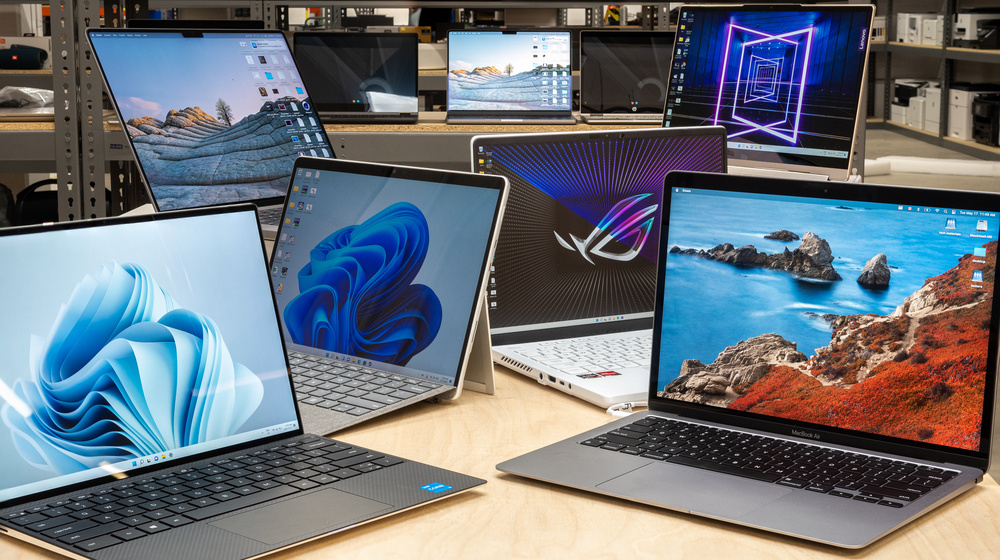In 2024, the laptop market offers a wide range of choices, catering to various needs and budgets. Whether you’re a student, professional, gamer, or casual user, finding the perfect laptop can be challenging. This guide will help you navigate the essential factors to consider when choosing your next laptop.
1. Determine Your Needs
The first step in choosing a laptop is understanding your specific needs. Different use cases require different specifications and features:
- Students: Look for lightweight and portable laptops with good battery life.
- Professionals: Prioritize performance, build quality, and features like a comfortable keyboard and a good display.
- Gamers: Focus on powerful processors, high-end GPUs, and fast refresh rate displays.
- Casual Users: Opt for budget-friendly options with decent performance for everyday tasks.
2. Operating System
The operating system (OS) is a crucial aspect of your laptop experience. The three main options are:
- Windows: Versatile and widely compatible with a vast range of software.
- macOS: Known for its smooth performance and integration with other Apple products.
- Chrome OS: Lightweight and suitable for web-based tasks, often found on budget-friendly Chromebooks.
3. Processor (CPU)
The CPU is the brain of your laptop, and choosing the right one is essential for performance:
- Intel Core i3/i5/i7/i9: Popular choices with varying performance levels; i5 and i7 are ideal for most users.
- AMD Ryzen 3/5/7/9: Competitively priced with excellent performance; Ryzen 5 and 7 are great for general use and gaming.
- Apple M1/M2: Found in MacBooks, offering impressive performance and energy efficiency.
4. RAM
Random Access Memory (RAM) impacts your laptop’s ability to handle multiple tasks simultaneously:
- 4GB: Suitable for basic tasks like web browsing and word processing.
- 8GB: Ideal for most users, providing a good balance between performance and cost.
- 16GB or more: Recommended for heavy multitasking, gaming, and professional applications like video editing.
5. Storage
Storage affects both capacity and speed:
- HDD (Hard Disk Drive): Offers more storage at a lower cost but is slower than SSDs.
- SSD (Solid State Drive): Faster and more reliable, significantly improving overall performance. Aim for at least 256GB.
- NVMe SSD: Even faster than regular SSDs, beneficial for high-performance needs.
6. Display
The display is essential for both productivity and entertainment:
- Size: 13-15 inches is ideal for portability and usability. Larger displays (17 inches) are better for gaming and media consumption.
- Resolution: Full HD (1920×1080) is standard; 4K (3840×2160) is excellent for high-end tasks and media.
- Refresh Rate: Higher refresh rates (120Hz or more) are beneficial for gaming and smooth visuals.
7. Graphics Card (GPU)
The GPU is crucial for gaming, video editing, and other graphics-intensive tasks:
- Integrated Graphics: Sufficient for basic tasks and light gaming.
- Dedicated Graphics: Necessary for gaming and professional graphic work. Look for NVIDIA GeForce GTX/RTX or AMD Radeon RX series.
8. Battery Life
Battery life varies widely among laptops:
- Ultrabooks and Chromebooks: Often offer excellent battery life, suitable for all-day use.
- Gaming Laptops: Generally have shorter battery life due to high-performance components.
9. Build Quality and Portability
Consider the build quality and portability, especially if you travel frequently:
- Materials: Aluminum or magnesium alloy chassis provide durability and a premium feel.
- Weight: Ultrabooks are lightweight and easy to carry, while gaming laptops are heavier but more powerful.
10. Ports and Connectivity
Ensure the laptop has the necessary ports and connectivity options:
- USB-C/Thunderbolt: Offers fast data transfer and charging capabilities.
- HDMI: Essential for connecting to external displays.
- Wi-Fi 6 and Bluetooth 5.0: Provide better wireless performance and connectivity.
11. Budget
Finally, determine your budget and find a laptop that offers the best value for your money:
- Budget Laptops (<$500): Suitable for basic tasks and students.
- Mid-Range Laptops ($500-$1000): Offer a good balance of performance and features.
- High-End Laptops (>$1000): Provide top-tier performance, build quality, and features for demanding tasks.

